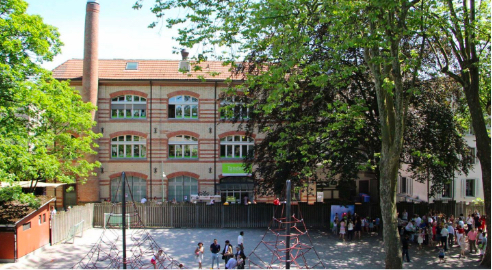“Student residences today handle more parcels than some small logistics centers, and they weren’t built for it.”
Online shopping has become a lifeline for students in Switzerland. Whether it’s textbooks from Germany, skincare from Korea, or electronics delivered overnight, the convenience of e-commerce is shaping daily life in student housing.
But this convenience has a cost.
Swiss universities and housing providers are grappling with a surge in deliveries that is pushing traditional mailrooms to their limits. What were once simple pick-up points are now overwhelmed storage zones where lost parcels and long wait times have become common complaints.
As the student lifestyle evolves, the mailroom management system that supports it must evolve as well.a
Why the Package Pile-Up is Happening: Across cities like Geneva, Lausanne, Zurich, and Basel, the shift to online-first living i
s reflected in the data. Recent housing reports show that parcel volumes have more than doubled in many student accommodations since 2020.
| Location | Avg. Weekly Parcels (2020) | Avg. Weekly Parcels (2024) | Increase |
| Lausanne Student Housing | 95 | 270 | +184% |
| Zurich Technical Residences | 70 | 180 | +157% |
| Geneva Student Village | 110 | 300 | +173% |
And it is not just the quantity. The speed and expectations have changed too. Next-day delivery, real-time tracking, and instant pickup are now seen as baseline standards.
Yet many mailrooms still rely on paper logbooks and manual sorting.
The Student Impact: Lost Parcels, Lost Time

Misplaced deliveries are not just a minor annoyance. Students frequently report missing internship documents, academic documents and materials, or personal items because of disorganized parcel systems.
The strain affects staff as well. Housing administrators often find themselves spending hours each week on parcel handovers, investigations, and storage issues that distract from more essential operations.
How Swiss Universities Are Adapting
To handle the increase in volume, some institutions are modernizing their approach with technology that replaces outdated processes with digital solutions. Systems that support organized parcel tracking, instant notifications, and secure handovers are gradually becoming part of the student housing toolkit.
These platforms help streamline how deliveries are managed and reduce friction for both students and staff. Housing managers can log incoming packages with barcode scans, send automated alerts, and maintain a reliable parcel history without relying on spreadsheets or inbox trails.
Solutions like these are often part of a broader push to adopt smart parcel management practices in high-density housing environments.
“The biggest difference isn’t just speed. It’s transparency,” explains a Zurich residence manager. “Students know when something arrives, and we can actually find it again.”_
What Efficient Mailrooms Look Like Today
Whether implemented at the university level or within private housing companies, digital mailroom setups typically offer:
| Feature | Benefit |
| Student alerts (SMS or email) | Reduces collection delays and missed pickups |
| Central dashboards | Enables full visibility into parcel status |
| Self-service pickup logs | Cuts down face-to-face interactions during busy hours |
| Cloud-based records | Makes it easier to audit lost or delayed parcels |
This shift toward structured mailroom management is not about replacing human staff. It is about enabling them to spend more time supporting students rather than chasing down boxes.
The Bigger Picture: Mailrooms as a Student Experience Touchpoint

Efficient parcel handling may seem like a back-end process, but it has a real impact on how students perceive their living environment. In international settings, especially, where students are far from home, the reliability of their housing services becomes even more critical.
Modern parcel systems also contribute to sustainability goals. Reducing repeated delivery attempts, minimizing storage overflow, and eliminating lost packages help cut waste and improve the environmental footprint of student housing operations.
“It’s about making everyday logistics invisible. When they work well, no one notices. That’s the goal,” notes a sustainability officer at a Swiss university.
Final Thoughts
As parcel volumes continue to rise, Swiss universities and student housing providers are facing an inflection point. Managing deliveries is no longer just an operational task. It has become part of the student experience.
Technology alone will not solve every problem, but it offers an essential framework for housing teams to adapt. By investing in tools that support organized mailroom workflows and scalable parcel handling, campuses can stay in step with modern student expectations.
Because in 2025, students do not just want fast delivery. They expect a system that can keep up with it.


